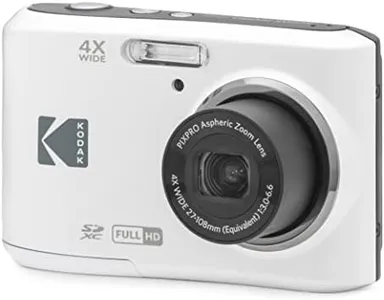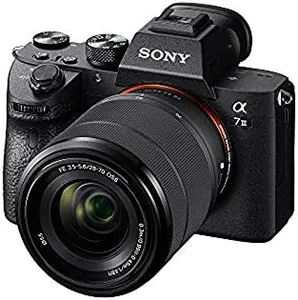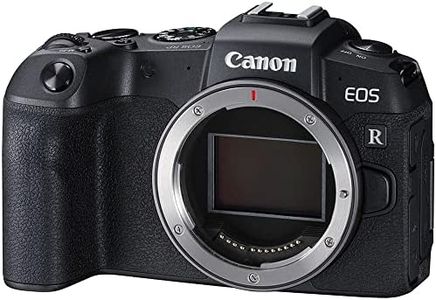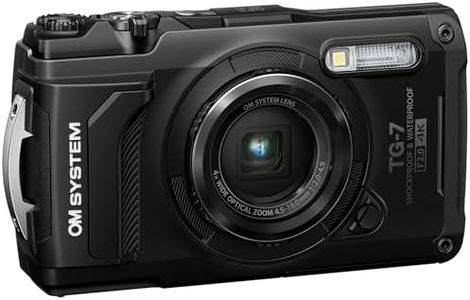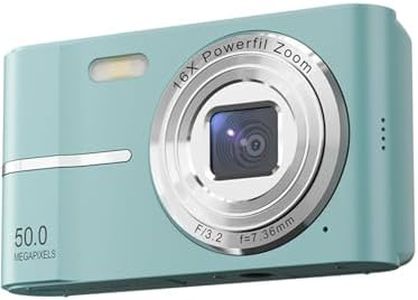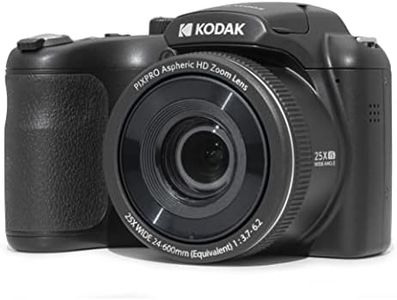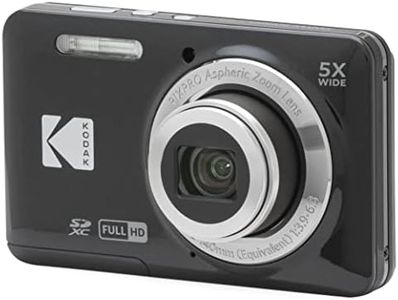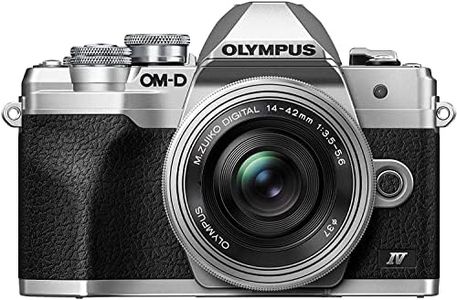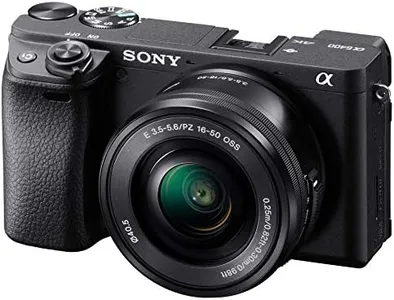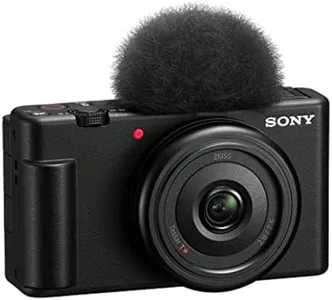We Use CookiesWe use cookies to enhance the security, performance,
functionality and for analytical and promotional activities. By continuing to browse this site you
are agreeing to our privacy policy
10 Best Cheap Digital Cameras
From leading brands and best sellers available on the web.Buying Guide for the Best Cheap Digital Cameras
When shopping for a cheap digital camera, it’s important to focus on the essentials that will give you the results you need without paying for features you might never use. Start by thinking about how, where, and how often you will use the camera—will it be for travel, family events, or just casual snapshots? Understanding your purpose makes it much easier to narrow down your choices. Equally, instead of just looking at the lowest price, make sure you’re getting a camera that’s reliable and meets your expectations in terms of photo quality, ease of use, and flexibility.MegapixelsMegapixels tell you how many dots make up each photo, and, in simple terms, higher megapixels mean you can print larger pictures or crop photos without losing quality. Most basic cameras today offer enough megapixels for regular prints and screens (around 12-16MP are common). If you plan to just post photos online or print standard 4x6 pictures, you don’t need high megapixels. However, if you want to crop photos often or make larger prints, look for models with more megapixels. For most casual photographers, anything beyond 16MP is usually more than enough.
Zoom RangeZoom describes how close a camera can bring a subject without moving physically. Optical zoom means clearer close-ups, while digital zoom just enlarges the image, sometimes making it look grainy. Cheap cameras often have a modest optical zoom range—between 3x and 10x. If you photograph far-away subjects (like wildlife or sports), opt for higher optical zoom. For general everyday use, a lower zoom (3x-5x) is typically sufficient. Always prioritize optical zoom over digital for picture quality.
Image StabilizationImage stabilization helps reduce blur caused by shaky hands, especially in low light or when zoomed in. Some budget cameras offer optical or digital stabilization. Optical is better, but digital can help too. If you often take photos indoors, in the evening, or zoomed in, stabilization becomes more important. If most of your photos are in daylight or your hands are steady, you may manage without it.
Screen Size and TypeThe screen lets you frame your shots and view your photos. Larger screens make it easier to see details, but can also make cameras bigger. Cheap cameras usually have screens between 2.5” and 3”. If you have trouble seeing small screens, prefer a larger one, but remember higher quality screens (like touchscreens) are rare in budget models. Focus on a screen that’s bright and clear for your comfort.
Battery TypeDigital cameras use either rechargeable batteries or standard AA/AAA batteries. Rechargeable batteries are convenient and usually last longer per charge, but need to be recharged regularly. Cameras using standard batteries can be handy if you travel and want to swap in new batteries quickly. Choose rechargeable for regular use or standard batteries if you want the convenience of quick replacements during travel or in remote locations.
Shooting Modes and FeaturesShooting modes are built-in settings that help you capture better pictures in different situations, like portraits, landscapes, or night shots. Cheaper cameras may not have as many modes, but having a few key ones can make life much easier for beginners. If you want the camera to handle all the settings for you, look for easy scene modes and an automatic setting. If you like experimenting, choose a camera that lets you adjust more settings manually.
Video QualityMany digital cameras can also record videos. Standard definition (SD) is enough for sharing on social media, but most cameras now offer high definition (HD, usually 720p or 1080p), which gives much clearer and smoother videos. If video is important to you, look for models with HD capability and a microphone port if you want better sound. For basic video clips, most cheap cameras’ video will be adequate.
Ease of UseSome cameras are more beginner-friendly than others. Look for menus and buttons that are simple and clearly labeled if you don’t want to spend a lot of time learning. Compact and lightweight cameras are easier to carry anywhere, while cameras with more buttons may offer more manual control, which is handy if you like experimenting. Pick a camera that matches your comfort level and patience for learning new features.
